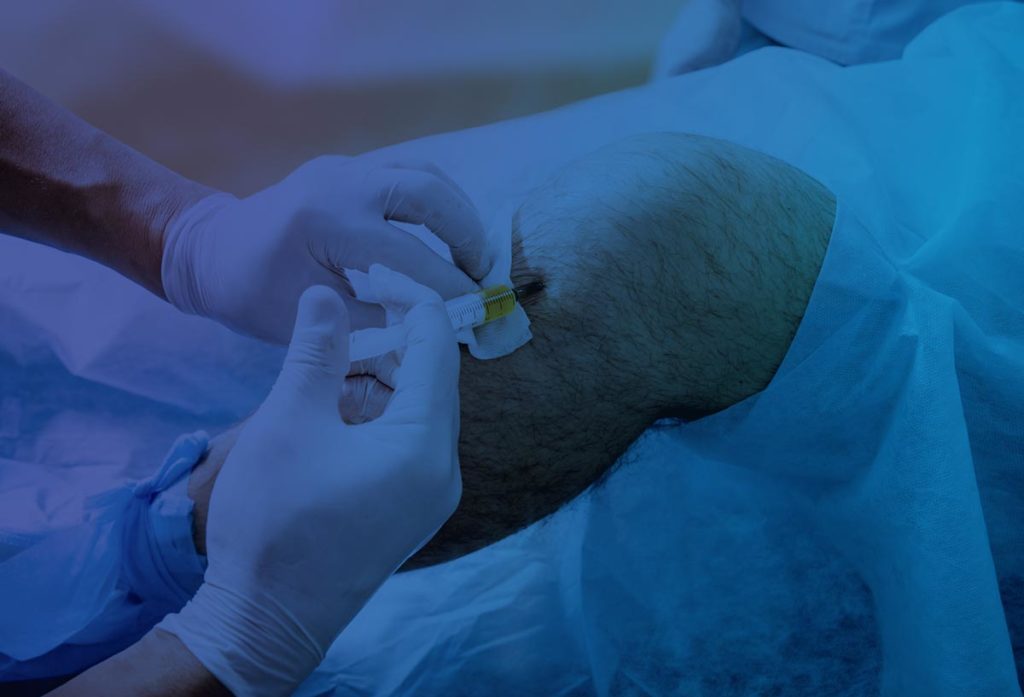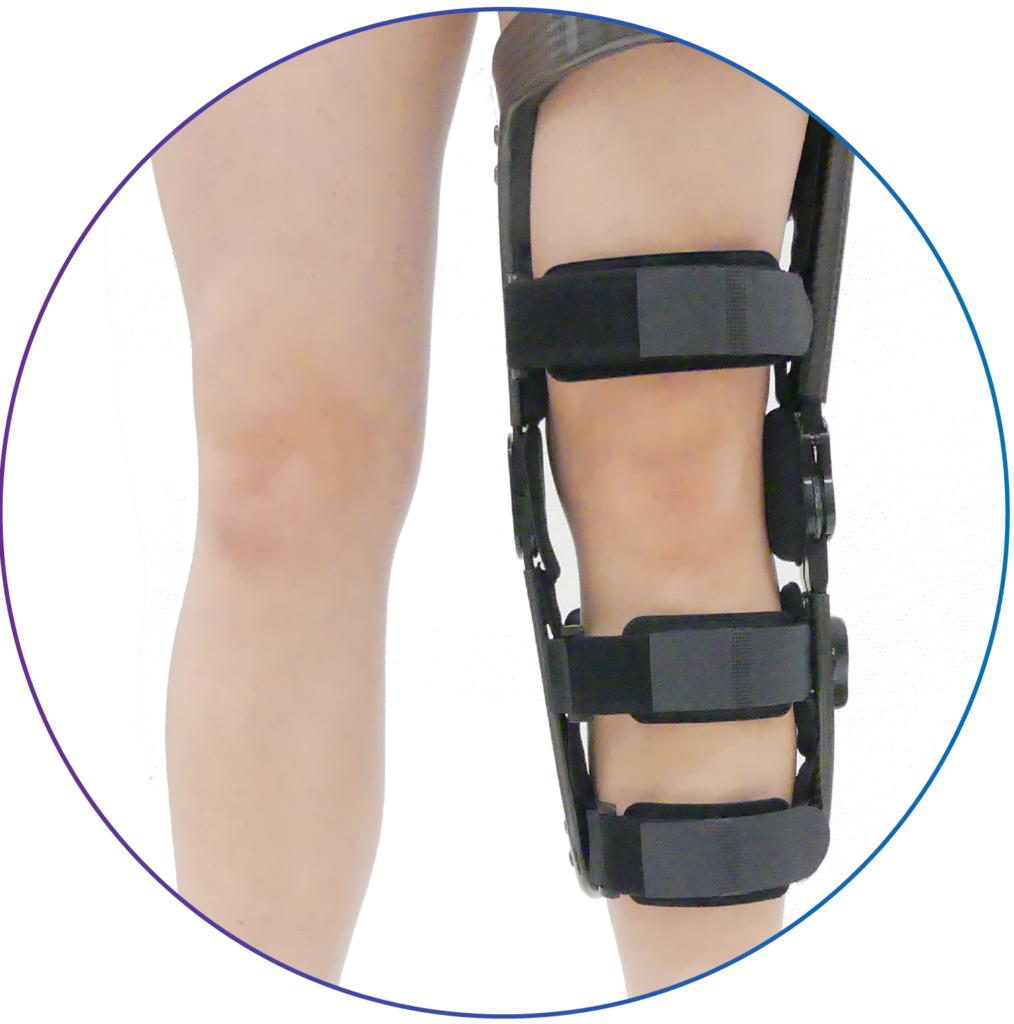Gel Injections for Knee Arthritis

Stiff and sore joints are a reality for most of us as we get older. Normally, our body secretes natural lubricants that reduce friction between the joint surfaces. Knee osteoarthritis increases friction in the joint causing the protective layers of cartilage on joint surfaces to slowly break down. Gel injections for knee osteoarthritis contain hyaluronic acid which can provide relief by improving joint lubrication. Treatments aimed at decreasing joint friction are also known as viscosupplementation. According to experts12, if you’ve tried exercising, dietary changes, and other painkilling drugs with no success, this treatment could be for you.
Viscosupplementation: Injecting lubricating substances into a joint with the goal of increasing function and decreasing pain.
How do Gel Injections for Knee Arthritis Work?
The active ingredient found in gel injections for knee arthritis is hyaluronic acid. Hyaluronic acid is produced naturally by our bodies. It is a key component of the lubricating synovial fluid found within many of our joints. In knees with osteoarthritis, the quality of hyaluronic acid decreases over time1. Low-quality hyaluronic acid affects the consistency of synovial fluid, reducing its lubricating and shock absorption qualities.
Synovial Fluid: Provides cushioning, supplies nutrients, and reduces friction between the surfaces of joints.
The main benefit of injecting hyaluronic acid into joints is greater lubrication. However, there are several other ways in which it may improve joint function1:
- Hyaluronic acid is “anti-oxidative”. This means it can combat the build-up of harmful substances in the knee joint.
- Hyaluronic acid may increase the knee joint’s ability to regenerate cartilage.
- Hyaluronic acid may reduce inflammation within the joint, relieving stiffness and pain from arthritis.
Hyaluronic Acid (HA): HA is found all over the body. It serves a variety of functions from skin repair to wound repair. In our joints, HA increases the thickness of synovial fluid improving lubrication and shock absorption.
The treatment procedure for gel injections for knee arthritis varies depending on the type of product being used by your doctor. SynVisc One, MonoVisc, and Durolane involve just one injection, while others require as many as five weekly injections in a row. The injections themselves are fairly quick as the injection solution and site do not need much preparation. As this is an outpatient procedure, you are free to leave the clinic after the procedure is complete.
.
How Much Pain Relief can Gel Injections for Knee Arthritis Provide?
Research into hyaluronic acid injections is much more established than that of platelet-rich plasma injections and stem cell therapy. However, much of it is sponsored by industry and the methods used differ greatly between studies. Despite this, the body of research to-date shows that hyaluronic acid can provide 4-24% greater pain relief compared to a placebo saline injection5 at 1-4 weeks post-injection. At 5-13 weeks, benefits may be even greater. Some studies have found up to a 43% benefit in pain reduction relative to placebo injections5. One recent study showed that patients who received gel injections for knee osteoarthritis were able to delay their knee surgery by 8.7 months6 on average.
Gel Injections for knee arthritis appear to be effective in reducing pain, particularly in the 5-13 week window after treatment.
Am I a Good Candidate?
Like any treatment for knee arthritis, some individuals respond better than others. Approximately 50% of patients have a noticeable improvement in their knee function and pain after receiving gel injections3. Much research has been done to understand the characteristics of people who consistently respond well to gel injections for knee arthritis4.
If you are considering getting gel injections for knee arthritis, take a look at the candidacy checklist. This tool is based on a 2011 study4 reviewing past scientific research on the effect of hyaluronic injections on those with knee osteoarthritis. The better candidate you are the more likely you are to have a positive experience. If you want to learn more or feel like this treatment could be for you, discuss your specific situation with your doctor.
Combination Treatments
Gel Injections and Knee Bracing
Gel injections may be even more effective when combined with knee bracing. A study in 2015 followed 207 patients after they had received a series of 3 hyaluronic acid injections7. During the 6-month follow up period, half of the patients were equipped with a medial uni-compartment offloader knee brace (learn more about offloader knee braces). Patients with moderate (grade III) knee arthritis saw improvements of 40% on average in their pain score. Those with mild knee arthritis (grade II) saw a 20% improvement on average. The addition of a knee brace resulted in better outcomes for patients with severe (grade III – IV) knee arthritis. These results are encouraging as gel injections in isolation appear to be less effective for those with severe knee arthritis1. A similar synergy may also exist with knee bracing and stem cell therapy.

How to Choose the Best Knee Brace for Arthritis
Knee Braces for Osteoarthritis – An Alternative to Knee Surgery
Top Five Offloader Knee Braces
Gel Injections and Stem Cell Therapy
Stem cell therapy is an extremely exciting area of research that may one day change how knee osteoarthritis is treated. Currently, patient outcomes from stem cell therapy are inconsistent with respect to re-growth of healthy knee cartilage. Hyaluronic acid may one day be part of the solution. The combination of hyaluronic acid and stem cell therapies may be more effective than either treatment alone. Some studies have shown that combined therapies have increased the chance of rebuilding cartilage8. Hyaluronic acid appears to enhance the capacity of stem cells to form cartilage, allowing the treatment to become more effective. Clinical trials are currently underway for this combination therapy9.
Treatment Cost
The estimated average cost for the popular Synvisc-One injection is $1012.00 in the United States. Another popular product, Durlolane, costs on average $894.00. Prices fluctuate greatly depending on the number of injections and administration time required. Depending on your insurance policy, much of these costs could be covered.
Side Effects & Risks
Gel injections for knee arthritis are well tolerated by the majority of patients. The most common side-effects are localized joint swelling and stiffness immediately after the injection10. After 1-2 days these issues are typically resolved. In rare cases, gel injections can induce a pseudoseptic inflammatory reaction11, resulting in symptoms including fever and low blood pressure. If left untreated, this can cause severe joint pain and inflammation to linger long after the initial injection(s).
Resources
Manage Your Knee Arthritis Without Surgery or Drugs
Knee Arthritis Treatment Guide
References
- Bowman, S., Awad, M. E., Hamrick, M. W., Hunter, M., & Fulzele, S. (2018). Recent advances in hyaluronic acid based therapy for osteoarthritis. Clinical and translational medicine, 7(1), 6.
- Ricci M et al (2017) Clinical comparison of oral administration and viscosupplementation of hyaluronic acid (HA) in early knee osteoarthritis. Musculoskelet Surg 101(1):45–49
- Bowman, E. N., Hallock, J. D., Throckmorton, T. W., & Azar, F. M. (2018). Hyaluronic acid injections for osteoarthritis of the knee: predictors of successful treatment. International orthopaedics, 42(4), 733-740.
- Divine, J. G., & Shaffer, M. D. (2011). Use of Viscosupplementation for Knee Osteoarthritis. Current Sports Medicine Reports, 10(5), 279–284. doi:10.1249/jsr.0b013e31822ed1b4
- Bellamy, N., Campbell, J., Welch, V., Gee, T. L., Bourne, R., & Wells, G. A. (2006). Viscosupplementation for the treatment of osteoarthritis of the knee. Cochrane database of systematic reviews, (2).
- Ong, K. L., Anderson, A. F., Niazi, F., Fierlinger, A. L., Kurtz, S. M., & Altman, R. D. (2016). Hyaluronic acid injections in medicare knee osteoarthritis patients are associated with longer time to knee arthroplasty. The Journal of arthroplasty, 31(8), 1667-1673.
- Morgan, T. K., Jensen, E., Lim, J., & Riggs, R. (2015). Image-guided hyaluronic acid injection and knee bracing significantly improve clinical outcomes for high-grade osteoarthritis. Sports medicine-open, 1(1), 31.
- López-Ruiz, E., Jiménez, G., Álvarez de Cienfuegos, L., Antich, C., Sabata, R., … Gálvez-Martín, P. (2019). dvances of hyaluronic acid in stem cell therapy and tissue engineering, including current clinical trials. European Cells and Materials, 37, 186–213. doi:10.22203/ecm.v037a12
- Lamo-Espinosa, J. M., Mora, G., Blanco, J. F., Granero-Moltó, F., Nuñez-Córdoba, J. M., Sánchez-Echenique, C., … & Villarón, E. M. (2016). Intra-articular injection of two different doses of autologous bone marrow mesenchymal stem cells versus hyaluronic acid in the treatment of knee osteoarthritis: multicenter randomized controlled clinical trial (phase I/II). Journal of translational medicine, 14(1), 246.
- Bhadra, A. K., Altman, R., Dasa, V., Myrick, K., Rosen, J., Vad, V., … & Just, C. (2017). Appropriate use criteria for hyaluronic acid in the treatment of knee osteoarthritis in the United States. Cartilage, 8(3), 234-254.
- Danilkowicz, R., Robinson, M., Steffes, M., & Marcus, M. (2017). Inflammatory pseudoseptic reaction to synvisc-one injection requiring diagnostic arthroscopy. J Case Rep Images Orthop Rheum, 2, 7-11.
- Bannuru, R. R., Osani, M. C., Vaysbrot, E. E., Arden, N. K., Bennell, K., Bierma-Zeinstra, S. M. A., … & Blanco, F. J. (2019). OARSI guidelines for the non-surgical management of knee, hip, and polyarticular osteoarthritis. Osteoarthritis and cartilage, 27(11), 1578-1589.
Frequently Asked Questions
Gel injections have been shown to provide pain relief, particularly 5-13 weeks after administration. When combined with bracing, pain relief from gel injections is even more pronounced.
Most patients tolerate gel injections well. Common side effects include localized joint swelling and stiffness after injection, which subsides after 1-2 days. A rarer, yet more severe, side effect is pseudoseptic inflammatory reaction.
The average cost for a Synvisc gel injection in the US is $1012.00.